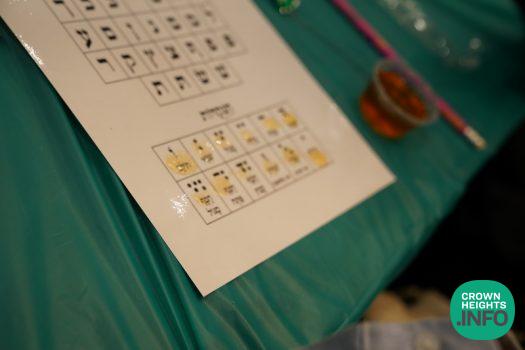
The ABC’s of Teaching Alef Beis
Question: My wife and I are Baalei Teshuva. Our first-born son is two years old and we would love to begin teaching him the Alef-Beis. I was actually thinking of having a local frum person teach him, using the letters written as they are found in the Torah (Ksav Ashuris). We have been told by some non-Lubavitcher friends that it is too early. Does the Rebbe speak about this? Are there any other directives of the Rebbe in regards to teaching Alef-Beis to children?
Answer:
Mazal tov on reaching this benchmark in your life and we all wish you much success in the Chinuch of your child. The following are a few broad-ranging directives that the Rebbe wrote to people over the years about this topic:
- The teacher: “The time has come that even in regards to teaching Alef-Beis, it should be recognizable that the teacher is a Chassid. It should be so recognizable that it affects the behavior of the students. They will daven, fulfill the mitzvos, and learn — all with a Chassidishe chayus.” (Igros, Volume 12 page 220; #4035)
- The Proper Age: “There are those which are careful not to teach (the ALef-Beis) to children under the age of three. There is actually a basis for this based on the passuk that tells us that we do not eat the fruits of the tree for the first three years. Yet, I have not seen that Anash (Chabad Chassidim) are careful about this stringency.” (Igros, Volume 14 page 40; #4788).
- The Type of Letters: “I have never seen anywhere that Jewish people use the “Ksav Ashuris” to teach the Alef-Beis to their children.” (Igros, Volume 8 page 157; #2398).
The Rebbe actually encourages that the first interaction with Alef-Beis should be done with the Shaar Blatt (the title page) of the Tanya. (Sefer Hasichos 5749, page 620).
Colorful Letters?
- Colorful letters: There was a Chassid by the name of R’ Menachem Ben-Tzion Wilhelm of Yerushalayim, who wrote to the Rebbe that there were those that were against teaching the Alef-Beis with each letter having its own color. They felt that the Alef-Beis should just be black and white and this will remind the Talmidim about the way the letters look in the Sefer Torah.
The Rebbe responded: “In regards to your question about the colors of the Alef-Beis, you should do whatever you feel is best to keep the interest of the students…We find the letters on the colorful stones of the Choshen and Eifod (of the Kohen Gadol in the Beis Hamikdash).” (Igros, Volume 23 page 83; #8748).
What is an Alef?
- Explaining the Alef to a child: “In the past, the teacher would draw a picture of a water-carrier with the two pails slanted, so that one is higher than the other. While it used to be the custom to have the picture of that water-carrier near a river filled with fish and a cat standing nearby. We should switch the picture and (instead of a cat), place a kosher animal like a bigger fish or a bird.” (Likkutei Sichos, Volume 25 page 310).
The Chassidishe approach to the above: “The Alter Rebbe once summoned a young disciple of the Maggid [of Mezritch]. Speaking in his customary singsong, he said: “I am charged with the commandment, ‘And you shall teach them to your children,’ and you are charged with the mitzvah of providing for your family. Let us exchange tasks. I will provide you with what you need to fulfill your mitzvah, and you will teach my son” — who was the Mitteler Rebbe.The Alter Rebbe then gave him a study plan:
“First, you should teach him the letters of the alef-beis. What is an alef? A point above, a point below, and a line in between. That makes an alef.“A child must know that the first principle of the Torah is a yud Above, a yid below, and a line of faith that connects them.” Or, according to another version: “The yud above is the soul, the yud below is the body, and the line in the middle is the fear of Heaven.” (Hayom yom 8 Adar 1)












Bachur
There are nafka minahs with using kisav ashires, it’s brought in halachah that there are certain cases where a tinok, a child who knows the letters but not how to read, is consulted to determine what letter a letter looks like. Halachah takes for granted that a tinok hasn’t learned the letter ches as it appears in a Torah (2 ziyens or a vov and a zayen with a hump on top).